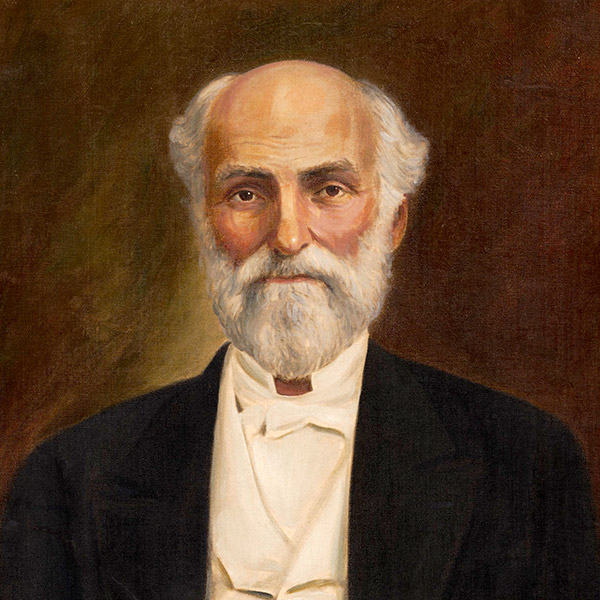Rufus Columbus Burleson
Baylor President, 1851-1861

Born near Decatur, Alabama in 1823, Burleson was an eager learner all his life and as a youngster was an apt student of languages, literature, philosophy, and the classics. Converted at age sixteen under the preaching of a visiting Presbyterian minister who was delivering the sermon at a Baptist-led revival, Burleson soon renounced his plans to become a lawyer and vowed to devote himself to the ministry. He entered a seminary in Nashville but was forced to withdraw after a year because of ill health. For the next five years he taught school in Mississippi and then enrolled in the Western Baptist Theological Seminary where he became interested in the religious needs of Texas. He graduated in 1846 and two years later moved to Houston as the replacement pastor for William Tryon who had died of yellow fever in November 1847.
When the trustees asked Burleson to become president of the fledging Baylor University, he did so on condition that the Board meet certain stipulations as regards the financial operations, the quality of facilities, and the practice of coeducation. To meet his demands, the trustees agreed to raise a $50,000 endowment, build whatever structures the enrollment dictated, and never to go into debt for anything -- agreements which unfortunately they were unable to honor. They did, however, do Burleson's bidding with regard to separating girls and boys in the classrooms and when the fifty-two students matriculated in September 1851, the male students were given the new stone structure on Allen Hill, about a half mile away from Academy Hill where the females were assigned to do their studies in the University's original wooden schoolhouse.
When Burleson took over Baylor, his first step was to publicize the positive aspects of a Baylor education which he did through circulars and letters. His second step was to enhance and enlarge the curriculum, along with the establishment of rules for decorum and behavior. The next was to upgrade the facilities by raising funds to purchase equipment, buy property, and construct new buildings.
Burleson was normally a mild-mannered individual, but he could be a tough adversary when things did not go his way. This was one of the reasons why he had so much difficulty with his colleague Horace Clark, whom the trustees had given the oversight of Baylor's female program at the same time that Burleson was made president of the whole University, which included both the male and female programs. During the next ten years, the controversy between these two prominent Baptist leaders rose its ugly head frequently and the bickering between them over leadership rights, privileges of position, and prestige was never fully controlled even though the Baylor trustees issued several ultimatums and suggested various "olive branch proposals."
As was the case with the three men credited as founders of Baylor University and the majority of the first Board of Trustees, Burleson was a slaveholder. In 1860, he owned one slave, and he held what would today be termed racist views regarding enslaved people.
Burleson was relentless in his pursuit to raise the University to the highest heights possible, and in 1861 when he resigned to take over an infant educational program in Waco, Baylor was hardly recognizable as the same school over which he had taken control a decade earlier. Under his leadership the curriculum had been expanded to include ancient and modern literature, natural philosophy, civil engineering, physiology, moral and intellectual philosophy, evidences of Christianity, history, and political economy. In addition, the library holdings had been substantially increased, three literary societies and two fraternities had been organized and several new structures had been erected on both campuses.
